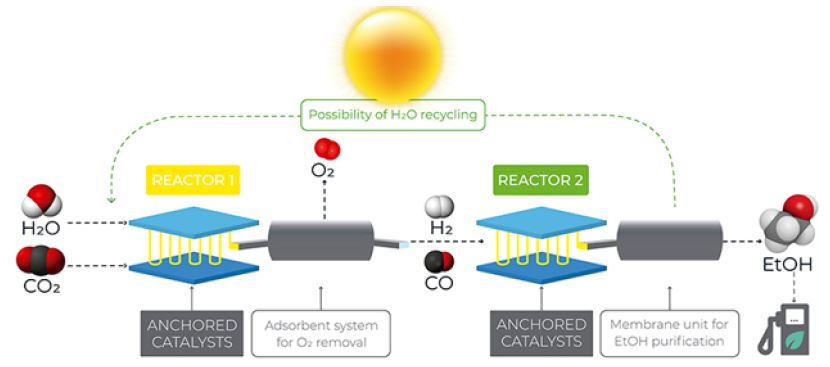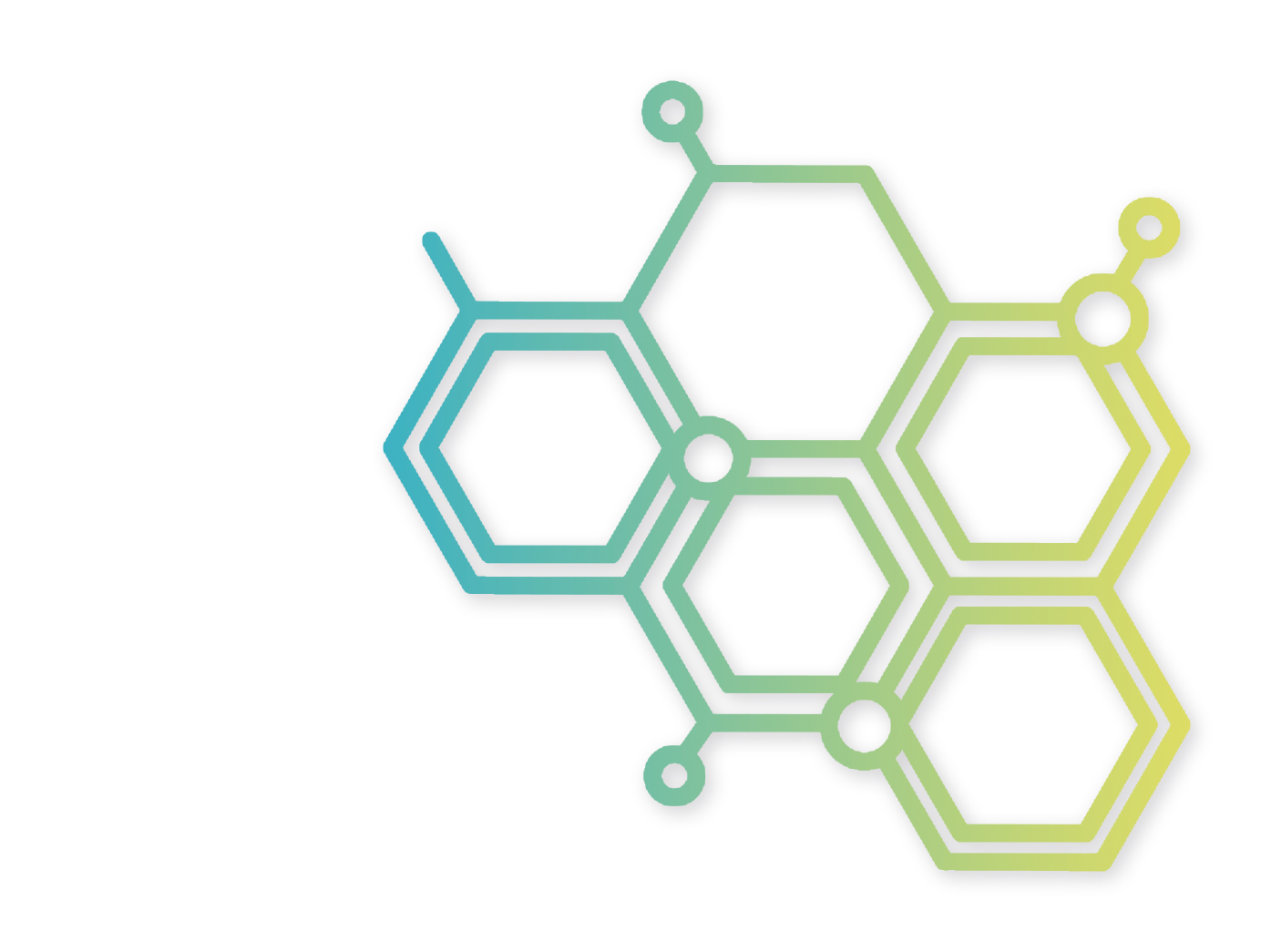METHODOLOGY


The project NEFERTITI is going to develop two connected functionalized flow reactors in a single device for the synthesis of fuels from CO2 and H2O.
Flow Reactor 1 will use enhanced heterogeneous photocatalysts (2-D COFs with Au & RuO2 nanoparticles) to perform the simultaneous conversion of CO2 and H2O, by mimicking Z-scheme photocatalysis found in nature to produce syngas. An adsorbent system will be used to continously remove the generated O2 produced durin the first transformation.
Flow Reactor 2 will use enhanced heterogeneous photocatalysts (Fischer-Tropsch Synthesis catalysts & TiO2) to transform the syngas into ethanol and C2+ alcohols.
A typical flow reactor is presented here. Photocatalysts for both transformations will be immobilised in the inner walls of the reactor.


The deposition of luminiscent solar concentrators at the external part of the glass flow reactors increases the photon absortion by the photocatalyst achieving a more efficient process.
HOW TO GET IT?
The reaction mechanisms for the photocatalytic conversion of CO2 / H2O and the formation of C-C bonds will be defined and optimized. NEFERTITI will develop a completely new way of producing such compounds that have an impact on the scientific understanding of this technology.

NEW PHOTOCATALYTIC, OPTICAL AND CHEMICAL MATERIALS
It will enhance the competitiveness of photocatalytic technologies and enable one-step carbon-neutral solar fuel production as an alternative to traditional multi-step processes.
OVERCOMING TECHNOLOGICAL CHALLENGES
The light-gathering components and flow reactors will be designed, developed and integrated into a system that achieves a TRL4 at the end of the project.
The economic and sustainability evaluation throughout the entire life cycle will consider socioeconomic and environmental impacts, as well as health and safety of workers to maximize productivity and resource efficiency and minimize risks.
